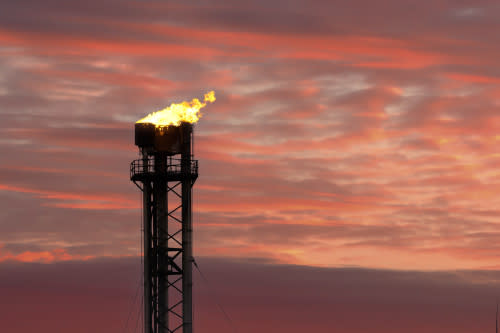Scientists now know why methane mysteriously surged during lockdowns

The world largely came to a halt in 2020 when extensive COVID-19 lockdowns were issued, which temporarily caused a global decline in greenhouse gas emissions. Despite the slowdowns in highly polluting sectors like aviation and manufacturing, methane emissions mysteriously climbed.
While carbon dioxide emissions are the main cause of rising atmospheric temperatures, methane is the second most abundant greenhouse gas and a particularly hazardous pollutant that scientists are closely monitoring.
See also: Why your fancy gas stove could be bad for the environment, and your health
Over a 20-year period, methane’s heat-trapping potential is up to 87 times more potent than carbon dioxide. Although carbon dioxide persists in the atmosphere for much longer time periods — up to several centuries — methane’s ability to rapidly warm the atmosphere highlights the urgency to investigate and address its sources.
So, why did methane emissions surge when most of the world screeched to a standstill in 2020?
A study published in Nature reports that the rise in methane emissions came from ecosystems that are typically methane sinks, such as wetlands. Additionally, reduced air pollution was also cited as an explanation for the rise in these emissions due to chemical changes in the atmosphere.

Gas plant flaring at a gas terminal in the United Kingdom. (Alexisaj/ iStock/ Getty Images Plus)
In the first half of 2020, lower levels of carbon monoxide and nitrogen oxides were emitted due to reduced combustion of fossil fuels and fewer fire emissions. Both of these compounds affect the concentration of hydroxyl radical, which is often referred to as a “detergent” in the atmosphere because of its ability to break down methane and other pollutants.
The study explains that hydroxyl radical is the main atmospheric sink for methane and even minor changes in its concentration can result in the rate that methane emissions accumulate in the atmosphere.
To determine how much the decrease in atmospheric hydroxyl and the environment contributed to the 2020 surge in methane, the researchers estimated the amount of methane that was emitted by the fossil fuel, agricultural, and waste sectors emitted in that year compared to 2019.
The study found that the reduced levels of human-released methane emissions in 2020 would have only resulted in a decrease of 0.4 parts per billion per year (ppb/year) compared to 2019. In 2020 the methane growth rate anomaly grew to 5.2 ppb/year compared with 2019, which is why the researchers state that the surge in emissions “must be attributed to a change of natural emissions and/or [the atmospheric] hydroxyl sink.”
Watch below: Historic Canadian town sinks as climate change sets into the North
Extreme weather patterns and other environmental factors were cited as triggers for the significant methane release in northern and tropical regions.
Northern Eurasia experienced abnormally warm temperatures during the 2020 spring and summer seasons, which the researchers say is a “sensitive region for methane emissions” due to sprawling wetlands, permafrost slumps, and Arctic lakes. In fact, the largest temperature anomaly that has been recorded in the past 20 years occurred over Russian permafrost regions in 2020.
NASA estimates that approximately 1,700 billion metric tons of carbon, including methane and carbon dioxide, are held within Arctic permafrost, which is approximately 51 times the amount of carbon that was released through fossil fuel emissions in 2019.
Abnormally wet conditions added another layer of environmental strain. Global wetlands saw a 2-11 per cent annual increase in precipitations compared to 2019, with some of the wettest conditions occurring in northern high latitudes and tropics. The researchers stated that shallower water tables, an earlier soil thaw, and a later soil freeze all contributed to higher methane emissions from high northern wetlands.
“It is probable that wetland emissions made a dominant contribution to the soaring level of atmospheric methane in 2020, although there is uncertainty regarding the magnitude of the contribution, mainly owing to uncertainty in the precipitation data,” the study stated.
“Our study highlights that future improvements in air quality with reduced [nitrogen oxides] emissions may increase the lifetime of methane in the atmosphere and therefore would require more reduction of methane emissions to achieve the target of the Paris Agreement,” the researchers concluded.
These new findings highlight the need for expanded policies that monitor and regulate methane emissions as well as deeper research into the processes that affect how this greenhouse gas decomposes in the atmosphere.
Thumbnail image: Tundra of the Arctic North Slope of Alaska in the National Petroleum Reserve. (Patrick J. Endres/ Getty Images)


